 |
 |
 |
| |
TMC125 in combination with other medications: summary of drug-drug interactions
|
| |
| |
Reported by Jules Levin
Glasgow, Nov 12-16, 2006
T.N. Kakuda, M. Scholler-Gyure, B.J. Woodfall,
G. De Smedt, M. Peeters, K. Vandermeulen, R. M. Hoetelmans
Introduction
TMC125 is a next-generation NNRTI designed to have a high genetic barrier to the development of resistance
TMC125 was selected as it maintains activity despite common NNRTI mutations
Data from TMC125-C207, a 7-day Phase IIa Proof of Principle trial with functional monotherapy in NNRTI-resistant patients, showed a mean change in log10 VL of -0.9
Data from the efficacy analysis of the Phase IIb trial TMC125-C223 in heavily treatment-experienced patients with substantial NNRTI and PI resistance demonstrated a 1 log10 drop in viral load at week 48
HUMAN PK Characteristics
--new formulation with improved bioavailability (F060): 200mg bid (F060) provides comparable exposeren to 800mg bid (T035)
--PK characteristics in multiple dosing: t1/2term 30-40 hrs (distribution t1/2 3.9-5.4 hrs); exposeren in bid dosing about 4 times higher than with single dose
--food effect (50% lower exposeren in fasted state: must be administered with food; exposure in HIV-infected treatment-experienced patients about 30% lower than in healthy volunteers.
Potential for Drug-Drug Interactions
Metabolized by CYP3A, 2C, (1A1) and UDPGT in vitro6
-- In vitro inducer of 3A
-- In vitro inhibitor of 2C9
Mild P-glycoprotein inhibitor in vitro
-- IC50 10.5 mg/mL (24.2 mM)
Minimal (<1.2%) renal elimination
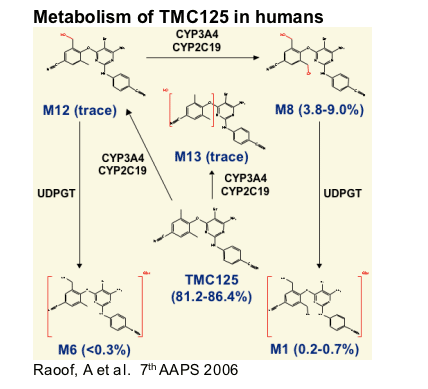
Drug interaction study designs
24 clinical drug-drug interaction studies and one cocktail study have been conducted to date
17 studies summarised
-- 15 in healthy volunteers and two in HIV-infected patients
-- Studies were open-label, randomised, cross-over, two-way interaction studies done at steady-state for both medications (TMC125 given with a standardized breakfast) with some exceptions
- five studies were one-way interaction studies: three studies were single-dose TMC125 studies; SIL was administered as a single dose
Formulations used
--TF002 in 3 studies
--TF034 in 1 study
--TF035 (Phase II formulation) in 8 studies
--F060 (Phase III formulation) in 5 studies
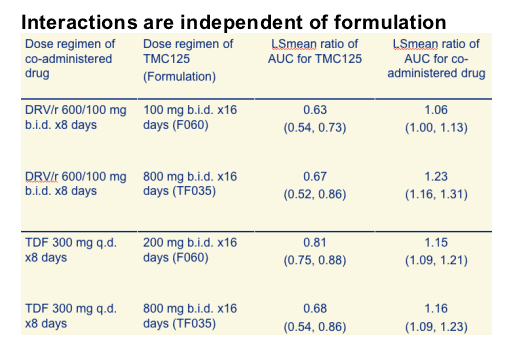
Mechanistic interaction studies
--Effect of PIs on TMC125
--Effect of RTIs and other drugs on TMC125
--Effect of TMC125 on PIs
--Effect of TMC125 on NRTIs and other drugs
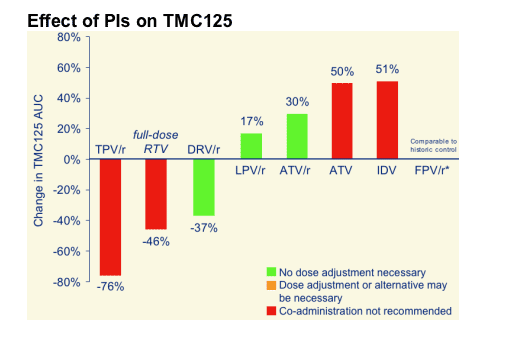
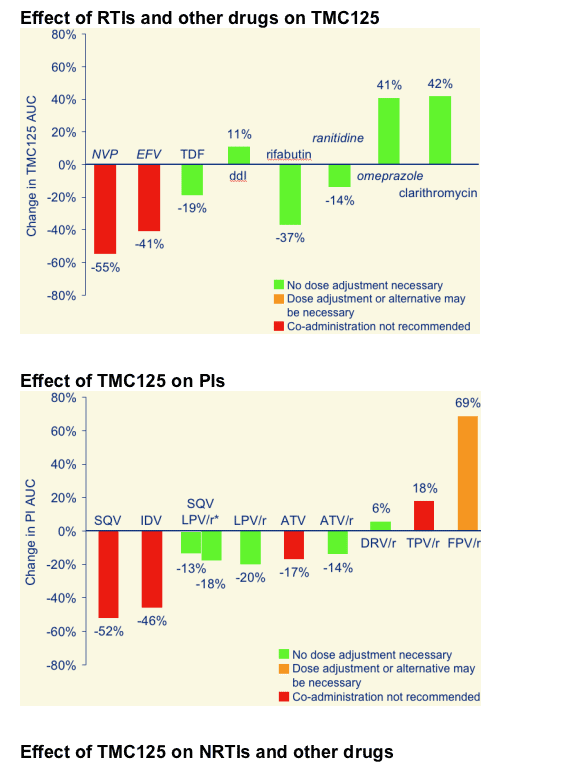
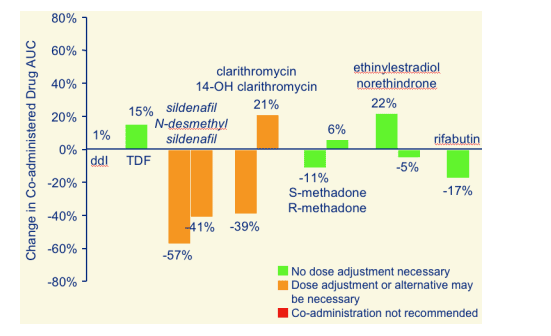
CONCLUSIONS
TMC125 is a next-generation NNRTI
-- potent antiviral activity against wild-type and NNRTI-resistant HIV-I
-- metabolised by CYP3A4, CYP2C19 and UDPGT
-- induces CYP3A and inhibits CYP2C19 in vivo (data on file)
TMC125 200mg bid (F060 formulation) is the dose used in Phase III trials
-- interactions are independent of formulation
-- TMC125 can be combined with most of the drugs studied without dose adjustment
TMC125 can be combined with most of the drugs studied without dosage adjustment
--EFV, NVP, TPV/r, (full-dose) RTV and unboosted PI not recommended in combination with TMC125
--FPV and sildenafil may require dose adjustment
--Alternative to clarithromycin recommended for treatment of Mycobacterium avium complex
|
| |
|
 |
 |
|
|